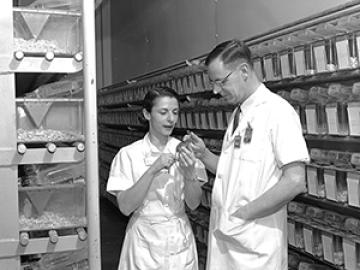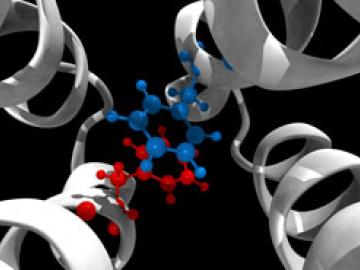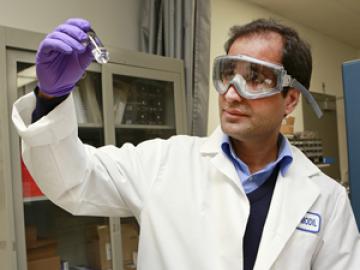
Filter News
Area of Research
- Advanced Manufacturing (6)
- Biological Systems (6)
- Biology and Environment (4)
- Building Technologies (1)
- Clean Energy (72)
- Climate and Environmental Systems (3)
- Computational Biology (2)
- Computational Engineering (1)
- Computer Science (9)
- Energy Sciences (3)
- Fusion Energy (6)
- Materials (62)
- National Security (5)
- Neutron Science (25)
- Nuclear Science and Technology (11)
- Quantum information Science (3)
- Supercomputing (41)
- Transportation Systems (3)
News Type
Date
News Topics
- 3-D Printing/Advanced Manufacturing (15)
- Advanced Reactors (7)
- Artificial Intelligence (12)
- Big Data (7)
- Bioenergy (9)
- Biomedical (5)
- Biotechnology (1)
- Clean Water (5)
- Climate Change (1)
- Composites (2)
- Computer Science (35)
- Cybersecurity (5)
- Energy Storage (8)
- Environment (19)
- Exascale Computing (2)
- Frontier (2)
- Fusion (5)
- Grid (5)
- Isotopes (1)
- Machine Learning (5)
- Materials Science (20)
- Mercury (1)
- Microscopy (5)
- Molten Salt (1)
- Nanotechnology (6)
- Neutron Science (18)
- Nuclear Energy (17)
- Physics (6)
- Polymers (2)
- Quantum Science (10)
- Security (2)
- Space Exploration (4)
- Summit (9)
- Sustainable Energy (8)
- Transportation (12)
Media Contacts

Researchers used neutron scattering at Oak Ridge National Laboratory’s Spallation Neutron Source to investigate bizarre magnetic behavior, believed to be a possible quantum spin liquid rarely found in a three-dimensional material. QSLs are exotic states of matter where magnetism continues to fluctuate at low temperatures instead of “freezing” into aligned north and south poles as with traditional magnets.

Growing up, Natalie Griffiths dreamed of playing shortstop for the Toronto Blue Jays. With a stint on the Canadian national women’s baseball team under her belt, Griffiths has retired her glove and now fields scientific questions about carbon and nutrient cycling and water quality ...

By analyzing a pattern formed by the intersection of two beams of light, researchers can capture elusive details regarding the behavior of mysterious phenomena such as gravitational waves. Creating and precisely measuring these interference patterns would not be possible without instruments called interferometers.









